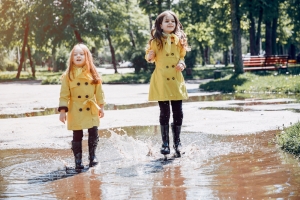Abstract
Digital entertainment has led to a decline in traditional creative activities for today's youth. Artistic activities, especially those using hands and colors, are crucial. They help with brain growth, emotional skills, and school success. This piece highlights the many benefits of involving children in visual arts. It also looks at the teaching methods that support these creative activities.
Neuroscientific Foundations of Artistic Engagement
Modern neuroscience shows the strong links between art activities and brain growth in early years. When kids engage in visual arts like drawing or painting, they activate different parts of the brain. This helps create new neural pathways beyond just art skills. The prefrontal cortex handles executive functions and decision-making. It becomes more active during creative tasks. Meanwhile, the motor cortex improves proprioceptive awareness with precise hand movements.
Longitudinal studies show that children who often do art activities perform better in school. This includes subjects like math, reading, and science. This connection comes from skills gained through creative expression. These include spatial reasoning, pattern recognition, sequential processing, and sustained attention. Each is key for academic success.
Developmental Stages and Artistic Engagement
Early Childhood: Foundational Skills Development
In early development, kids use art materials mainly to improve their gross and fine motor skills. Using tools, mixing colors, and coordinating movements to create images on surfaces are key exercises for developing neuromuscular skills. These activities build the complex muscles in the hands and fingers. They create the biomechanical foundation needed for good writing skills.
Furthermore, chromatic exploration during this developmental phase facilitates crucial perceptual learning. Children start to see different colors, understand how they relate, and form likes and dislikes. These skills help them improve their ability to tell colors apart. Online coloring ressources online have made it easier for parents and teachers to find materials. Now, they can access age-appropriate choices that meet educational standards. Plus, they don't have to worry about costs.
Middle Childhood: Symbolic Representation
As kids grow, their art changes. They move from simple doodles to more complex drawings that represent ideas. This transitional phase coincides with the development of narrative thinking and abstract conceptualization. Children use visual media to tell stories, share feelings, and imagine different situations. These skills are key to developing advanced reasoning.
The selection of subject matter during this period warrants particular attention. Characters like Hello Kitty are everywhere and resonate emotionally. They give kids a familiar way to explore who they are, build friendships, and express feelings safely. These well-known images help kids explore their creativity. They lower mental effort as children play with composition, size, and color balance.
Pedagogical Applications in Educational Settings
Montessori and Child-Centered Approaches
Maria Montessori's educational philosophy highlighted the key role of sensory education and self-directed learning. These ideas blend perfectly with artistic activities. In Montessori settings, creative materials are easy to access. This allows children to start art projects based on their own interests and readiness. This autonomy boosts intrinsic motivation. It's a stronger and longer-lasting driver of engagement than extrinsic rewards.
Modern educators build on these basics by adding various art forms to learning experiences. Progressive educators don't see art as just an extra subject. Instead, they include creative activities in every part of the curriculum. This approach helps students understand and remember information better in all subjects.
Constructivist Learning Theory
Constructivist learning theory, created by Jean Piaget and Lev Vygotsky, states that we learn by actively building our knowledge, not just receiving it. Artistic activities show this principle well. Children don't just copy what they see. They blend sensory experiences, what they already know, and their imagination to create something new.
The zone of proximal development is Vygotsky's idea about the gap between what someone can do alone and what they can achieve with help. This concept works well in artistic settings. Teachers can carefully support kids' creative activities. They can give challenges that are just right—hard enough to help them grow but not too tough to cause frustration.
Therapeutic and Emotional Benefits
Art Therapy Applications
Art therapy is now a recognized clinical field. It highlights the deep psychological benefits of creative expression. Licensed art therapists use visual media to help kids process emotions, resolve trauma, and change behaviors. They help children with various psychological issues. This includes anxiety disorders, autism, and attention deficits.
Art therapy works well for kids with language or social challenges. This is because art materials are safe and there are no verbal demands. Creative expression helps these individuals share their inner experiences. This lets therapists access psychological content that might stay hidden.
Social-Emotional Learning
Artistic activities go beyond clinical uses. They are great tools for social-emotional learning. This includes developing self-awareness, social awareness, self-management, relationship skills, and responsible decision-making. Collaborative artistic projects require negotiation, understanding different viewpoints, and resolving conflicts. These skills are key for personal well-being and professional success.
Creating, sharing, and getting feedback on art helps build resilience and coping skills. Children learn to accept imperfection. They improve on their first tries and find joy in small progress. These mindsets apply to school and friendships.
Digital Democratization and Accessibility
The rise of internet connectivity has changed how we access creative resources. It has broken down economic and geographic barriers that once limited artistic involvement. Families and schools on a budget can now access many high-quality materials for free. This means kids can learn regardless of their financial situations.
This democratization extends beyond mere availability; digital platforms enable unprecedented customization and personalization. Parents and teachers can build collections that match kids' interests and learning goals. This level of individualization was once only possible in well-resourced environments. The availability of coloring resources online has transformed how families approach creative development at home, providing instant access to educational materials that support both entertainment and learning objectives.
Digital resources have changed how we access art. Still, it's important to keep the hands-on experience of engaging with it. Touching real materials gives us feedback that helps us learn. The way paint goes on can be surprising. Plus, marks on paper last forever. These experiences are unique. Digital tools can't match them.
Parental Engagement and Home Environment
The home environment plays a crucial role in shaping children's creative development. Parents can boost creativity by setting up special spaces. These areas should have easy-to-reach materials, good lighting, and few distractions. The steady access to artistic resources shows that creative engagement matters. This encourages spontaneous artistic expression instead of limiting it to scheduled activities.
Parental attitude toward creative output holds equal significance. Research shows that praising the process boosts creativity more than praising the product. This distinction helps children focus on experimenting, solving problems, and expressing themselves. They can do this instead of following external standards or seeking approval.
Co-creative experiences—where parents or caregivers do art with kids—offer extra benefits. These shared experiences build strong bonds. They also show creative problem-solving and spark meaningful conversations. When adults share their creative work, kids learn to accept mistakes and keep trying. This helps them have a better view of imperfection and persistence.
Conclusion
Creative activities are essential for a child's development. The evidence demonstrates their significance. Visual arts are not entertainment. They are key educational tools. They boost cognitive skills, emotional intelligence, motor skills, and cultural knowledge.
Educators should add artistic activities to every subject, not in art classes. Parents must ensure that kids have regular access to suitable materials. They also need to set aside time for creative exploration. Policymakers need to see that investing in arts education brings significant benefits. These include better academic performance, social-emotional growth, cultural understanding, and economic innovation.
As creative development continues throughout childhood, familiar characters and themes provide consistent engagement opportunities. Resources featuring Hello Kitty drawings and similar beloved icons serve as effective entry points for sustained artistic practice, combining cultural recognition with developmental benefits that support long-term creative growth and emotional expression.






